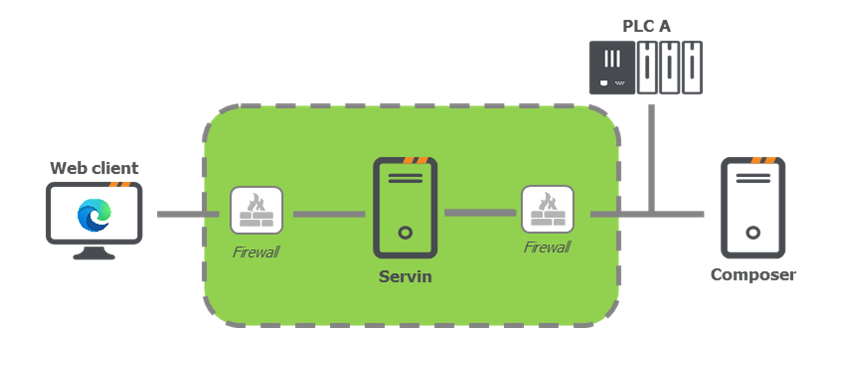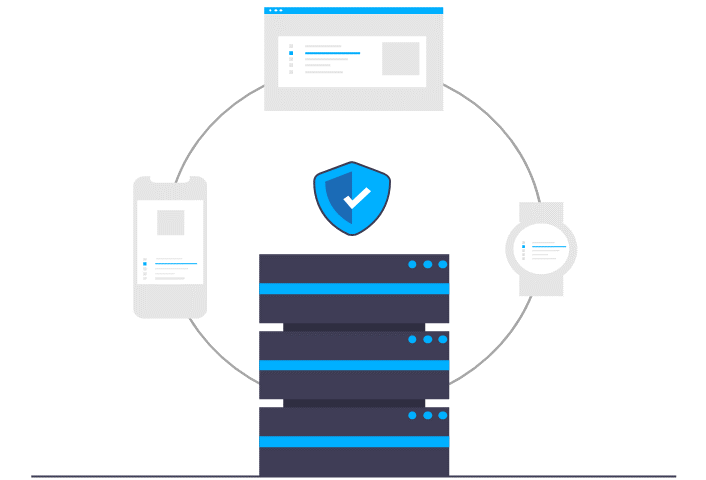Integrators and customers are often faced with difficulties in meeting IT standards, while ensuring a rapid and secure implementation. This article explores the common obstacles encountered in managing SCADA architectures, best practice in overcoming them, and how a centralised approach to communications can turn these challenges into opportunities. Panorama, an industrial SCADA software platform, offers innovative solutions to facilitate inter-workstation exchanges and streamline communications, i.e. centralise them on a single communication bus.
The challenges of a SCADA architecture
Complexity and compliance
Managing architectures is often perceived as a headache. According to a Gartner study, 60% of companies in the industrial sector say that compliance with IT standards is one of their main challenges. Architectures must not only meet security requirements, but also integrate a variety of technologies, which complicates their deployment.
Security and exposure
SCADA architectures are often vulnerable due to their exposure to cyber risks. An IBM Security Report 2023 study reveals that 32% of cyber attacks target industrial infrastructures. Multiple exposure surfaces increase these risks, making system security an absolute priority.
Slow and complex to implement
Deploying cyber-secure architectures is often slow and complex. Companies have to juggle different protocols and tools, which slows down processes and increases costs. According to a McKinsey survey, 45% of industrial companies believe that the complexity of their IT architectures delays their projects by more than six months.
Centralising data flows for greater security and flexibility
A single communication bus
Centralising communication flows is a promising solution to these challenges. Panorama integrates a single communication bus for inter-workstation exchanges. This approach makes it possible to meet IT and OT standards while deploying cyber-secure architectures.
JSON RPC: a secure alternative
Panorama offers the JSON RPC protocol as a robust alternative to DCOM. It eliminates the need for a domain controller and offers flexibility in the choice of flow direction, improving security and flexibility. With only one port to open between each machine, firewalls and DMZs are easier to set up, further reducing exposure areas.
Securing SQL CHANNELS
The use of the secure bus for SQL flows in Panorama means that eliminates direct communications with databases , once again reducing the risk of exposure. SQL databases are no longer directly exposed, with data passing through the communication bus and then through the SQL flow.


Installation of a reverse proxy
The use of a single communication bus allows the integration of a Reverse Proxy, to better control access and protect PLCs behind protection systems. Here, the HMI server (called Servin in Panorama architecture) acts as Reverse Proxy. A list of authorised client URLs can be defined, providing an additional layer of security.
Grouped Communication CHannels, a real asset for your infrastructures
Efficiency and security
A centralised flow architecture, such as that proposed by Panorama, offers increased efficiency and enhanced security. By reducing exposure areas and simplifying deployment, companies can concentrate on their core business while ensuring that their systems are protected
Compliance and flexibility
Centralising workflows with Panorama also makes it easier to comply with IT standards, while offering greater flexibility in managing architectures. This brings the IT and OT spheres closer together. Companies can thus adapt their systems to technological developments and new security requirements.
Reducing costs and timescales
Finally, Panorama’s centralised approach to workflows helps to reduce implementation costs and timescales. By simplifying architectures and eliminating third-party tools, companies can accelerate their projects and make significant savings.
The centralisation of data flows in IT architectures represents an effective solution to the challenges of complexity, security and compliance. By adopting protocols such as JSON RPC, secure SQL flows and integrated Reverse Proxy, Panorama enables businesses to transform their architectures and optimise their operations. This approach offers overall added value, combining efficiency, security and flexibility, while reducing costs and implementation times.







